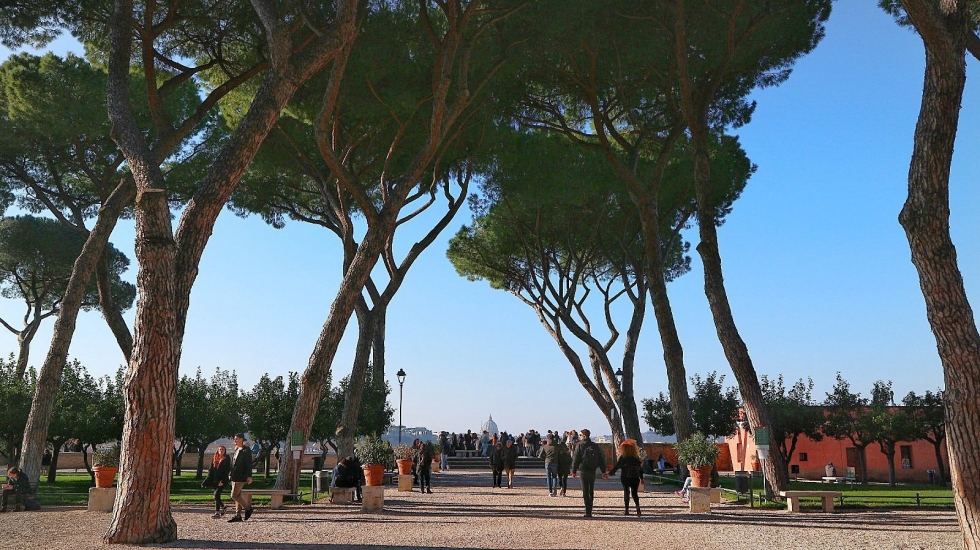One of the most suggestive and exciting views of the Eternal City is the one from the Orange Garden. This splendid green space is on the Aventine Hill and it overlooks the Tiber river, giving, through its belvedere, the most beautiful sight. The unique shapes of Castel Sant’Angelo and Saint Peter’s Basilica from here are breath-taking. The Orange Garden is nothing but Parco Savello, that takes its name from the Savelli family, that once had a small castle on this same spot. This family, one of the most powerful in the Middle Ages, believed to descend from the mythical king Aventine, grand-nephew of Aeneas and ancestor of Romulus and Remus.
According to the legend, Aventine was buried on this hill, that took its name from him and that in the Roman period was considerably important. It was the location in which plebeian assemblies nominated their tribunes. Moreover, on the Aventine, among others, there was the extremely important temple of Diana, goddess of hunt, forests and fertility. Young brides used to bring to the goddess gifts of any kind to “facilitate” the pregnancy. But let’s get back to Savellis. Five popes came from their family, among them Honorius III and Honorius IV. These two popes at the end of 1200s (1285 to be exact) built a small castle near the basilica of Saint Sabina, on the same area of an already present fortification from the 10th century. When the Savelli castle fell into ruin, abandoned by the family, Dominican friars of the church of Saint Sabina took possession of the area, transforming its ruins into a garden. We’re in the 16th century. A successful requalification of the area was perpetrated only at the beginning of the 20th century. Although from the beginning of the 1900s there was this idea of turning the land into a public park, the actual garden that we can see today is from 1932. Its surface of 7.800 square meters has a very rational structure. There’s the main boulevard, of notable dimensions, perpendicular to the terrace, that ends with two squares allowing to easily enjoy a really suggestive view. The Garden takes its name from the numerous bitter oranges in it, that turn it into a completely unique green area in the Roman environment, and not only that. This wonderful and suggestive location is used in summertime also for important theatrical and musical events. There are three accesses to the Garden; the main one is characterized by a splendid gate form the 1500s. To be precise, it was built in 1561 by Pirro Ligorio and placed at the entrance of Villa Balestra, commissioned by Pope Pius IV. The name Balestra comes from the family that at the beginning of the 1900s became its owner. Only in 1937 this gate was placed at the main entrance of the Orange Garden. Also the fountain leaning on the park’s wall, near the gate, captures the attention. It is made by a granite basin from the Roman period and it is decorated with two reliefs of large handles. Over the basin, there is a monumental marble mask with funny lineaments, made, apparently, under the project of Giacomo Della Porta, at the end of the 1500s, to decorate another fountain in Campo Vaccino (name of the Roman Forum during the Renaissance) used to water cows. After the dismantling of this fountain in 1816, the marble mask had many adventures until 1936, when it was placed where we can see it today. One last note about the oranges of the Garden. They were planted by the Dominican friars of the close church of Saint Sabina already in the 1500s, in memory of Saint Dominic of Guzman that planted, in the cloister of the basilica an orange tree brought from Spain. It was the first one in Rome and probably the first one in Italy after the Ancient Roman period.
Giuseppe Rosselli




